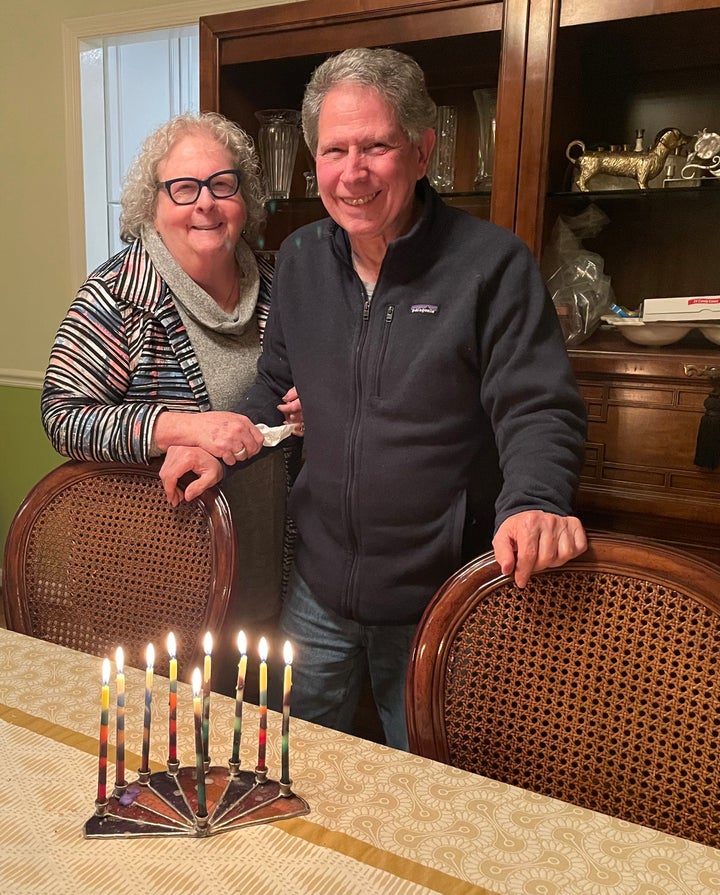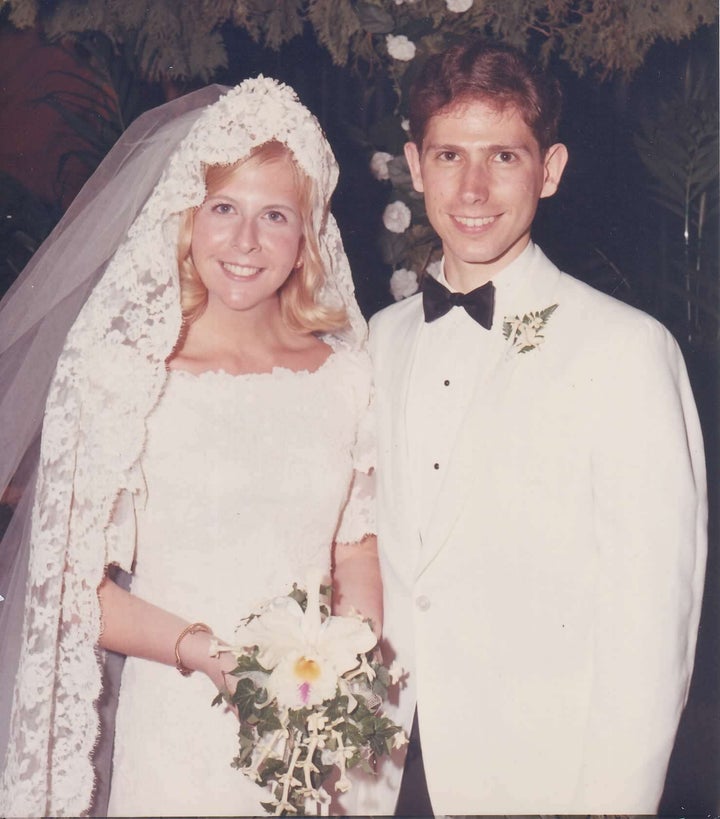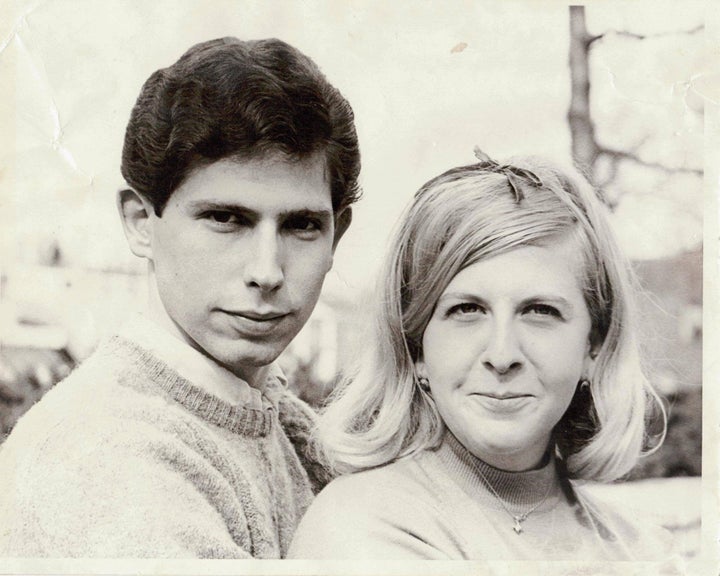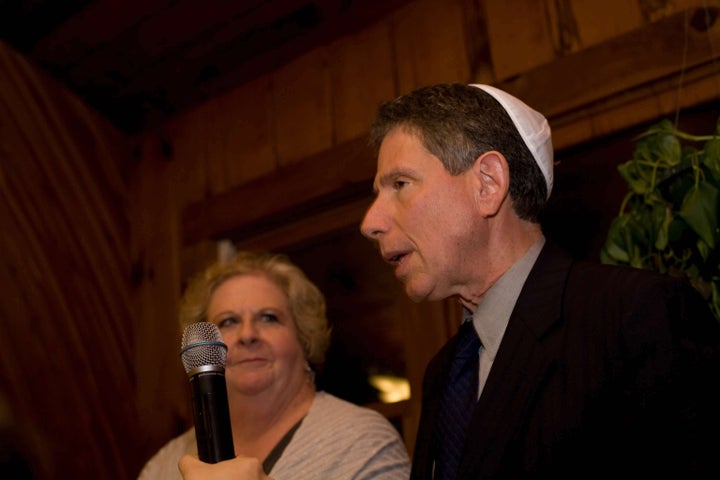
Warmed by the morning sun and awed by the heavenly fragranced lilies, peonies and lilacs, I’m luxuriating on our screened porch in my pyjamas. The quiet is punctuated by birdsong — my favourite morning soundtrack. I’m not ready for human interaction, but there is an annoying tap tap on the screen door.
Neil, my husband of nearly 60 years, is trying to get my attention.
Doing my best to keep him from breaking my spell, I feel a bit guilty as I turn up my music. He desperately wants to spreadsheet our day, and I am not even close to ready for that.
The phone rings, and he is temporarily distracted. Whew!
Neil and I are polar opposites. Each day unfolds before my eyes, ripe with possibility. Neil, who has already been to the grocery store, dropped off laundry, worked out at the gym, and taken the dog to the vet, is ready to tackle whatever is on my list.
I am barely awake. What list? I groggily wonder.
Meanwhile, a UPS truck lumbers down the street as I contemplate my options. Neighbourhood lawn services roar with weed eater sounds, and the mowed grass smells like fresh scallions.
As I drink my coffee, a feeling of calm surrounds me.
The screen door opens with a squeak.
Neil ― what a guy. In addition to his many duties, he is the manager of all things me. He appears at the threshold of the porch juggling my coffee and a Danish in one hand, my handwritten list in the other. It is the “to-do” inventory I had outlined the night before. Damn.
Will I ever learn? I ask myself.

At night, I am full of ambition, ready to tame dragons and wrestle our “honey-do” list to the ground. Neil is up every day by 6 a.m., and usually asleep by 10:00 p.m., when I am just getting my second wind. On a good night, I’m in bed by 1:00 a.m. and awake at the crack of... 10:00 a.m.
“Half the day is gone already,” he mutters to no one in particular. The last thing I want to do during my waking up phase (which can take between 30 minutes and an hour) is A: talk, B: plan the day, and C: act like I give a hoot about a stupid list I wrote in a moment of misplaced motivation. I love this guy, but I need him to gimme a minute.
Neil always takes me literally. In all of our decades together, he has never figured out that my nighttime planning and ambition often fade with the light of day. I forget what seemed so important the previous night. Not him — he remembers every excruciating detail.
Neil patiently waits for sleeping beauty — that’s me — to fully awaken, so that he can help me tackle that horrid list.
Why is he like this? I wonder. We’re from the “Free to Be You and Me” generation, and we equally shared all the duties involved in running our chaotic family of four rambunctious kids under the age of 10. He changed diapers, made lunches, bought groceries, did the laundry, and more. I was the designated talker when it came to home repairs, juggled hapless babysitter schedules and medical appointments, shopped for large appliances, and bought and repaired the cars.
“You’re making a sissy outta that guy,” my “un-liberated” father told me more than once. Our upside-down world mystified his traditional soul, and he just couldn’t see — no matter how many times I explained it — that without our shared duties, I would have been unable to succeed at an exciting, high-pressure job in D.C. It was hard, with a minimum two-hour daily commute, but I believed that the environmental policies I worked on at EPA truly made people’s lives better. I loved Neil for sharing everything that came our way (to me — and I am guessing many other women — there is nothing sexier than a partner who shares the work).
For us, life was full of laughter, messes, and mostly delight. The children challenged us and taught us lessons we are still figuring out. For 10 years, on top of working, I was either pregnant or nursing someone. It is a happy blur, and I would not change a thing.

In the midst of my reminiscing, I can’t help but notice how adorably earnest Neil looks this morning. Even when he’s dressed casually for a day at home or running errands, he is clean-cut, well pressed, and he smells like Dial soap. I currently have raccoon eyes from last night’s makeup, bed head, and I could use a shower. But he loves me anyway.
All I wanted to do this morning was absorb the day, relax, write a little, and not move from our comfortable porch.
Can this marriage be saved?
What miraculous alignment of the planets could bring two opposites together... and make them stick together for six decades?
Recently, at an anniversary party in a room full of friends and family, Neil
toasted our longevity in his favourite language — science jargon. Clearly understood by other neuroscientists, it leaves some of us civilians scratching our heads. Rarely does Neil volunteer to speak publicly in his private life, although professionally, as head of Alzheimer’s research for the National Institutes of Health, he gave talks all over the world. At home, he is quite reserved, so I didn’t anticipate what was coming.
Clearing his throat, he described our loving relationship in science talk.
“What makes us so perfect for each other,” he said as he raised his glass in my direction, “is a phenomenon called complementarity.”
Wait. What? I thought. What is he talking about?
“We each have qualities that the other lack, making it possible to accomplish more together than we could individually.”
In other words, I thought as I listened, opposites do attract.
He described his own brain function like an Excel document — “linear, clear cut, unambiguous.”
“Marjorie’s brain works more like a Jackson Pollack splatter painting,” Neil added. “Or a dandelion ready to burst with 10,000 seedlings — each a new idea or different problem-solving approach. My wife has taught me to enjoy the journey and not worry so much about the destination. That’s a whole new paradigm for me, and while I don’t find it easy, the unexpected rewards make it worthwhile.”

He was grinning from ear to ear, and the crowd gave him a standing ovation. My face hurt from too much smiling.
After the party ended, I was glowing for days.
This morning, at home on the porch, we still had to figure out our day.
Throwing his hands in the air, Neil says, “If you want to accomplish all these things, we have to leave right now.”
“What things?” I ask, lost in the birdsong, the flowers waving in the wind, and the impossibly delicious fragrance of Dial soap.
Raking his fingers through his thick, wavy, salt and pepper hair, he looks at his watch one last time as if, by combing through his hair, he could somehow transform me into a right-brained task-completer like himself.
Whatever seemed so important when I made that list last night is now forgotten.
“I give up,” he says, and the sides of his mouth start to turn upward into an almost smile.
The twinkle in his eye is unmistakable. He joins me on the couch for an early summer snuggle.
“So what about the list?” I ask.
“What list?” he responds.
I know it’s going to be a good day.
Marjorie Weidenfeld Buckholtz is a recovering civil servant following a 25-year stint at the Environmental Protection Agency. Among other initiatives, she developed the EPA Brownfields program, now codified into law. It leverages community grants with local investment to improve neighbourhoods and build safer places to live and work. After retirement, she ran a consulting business (Environmental Consulting Solutions) which helped developers and investors navigate government regulations to promote renewable energy demolition and construction. Marjorie took a 35-year hiatus from her first love, free-lance writing, to raise four children with her husband, Neil, a neuroscientist. Now, she is busy with writing and her five grandchildren. At 77, she says she feels like “she is just getting started writing again.” Her work has appeared in The Birmingham (Alabama) News, Grands, Kveller, Tablet, Lileth, Moment, The Government Executive, and others.